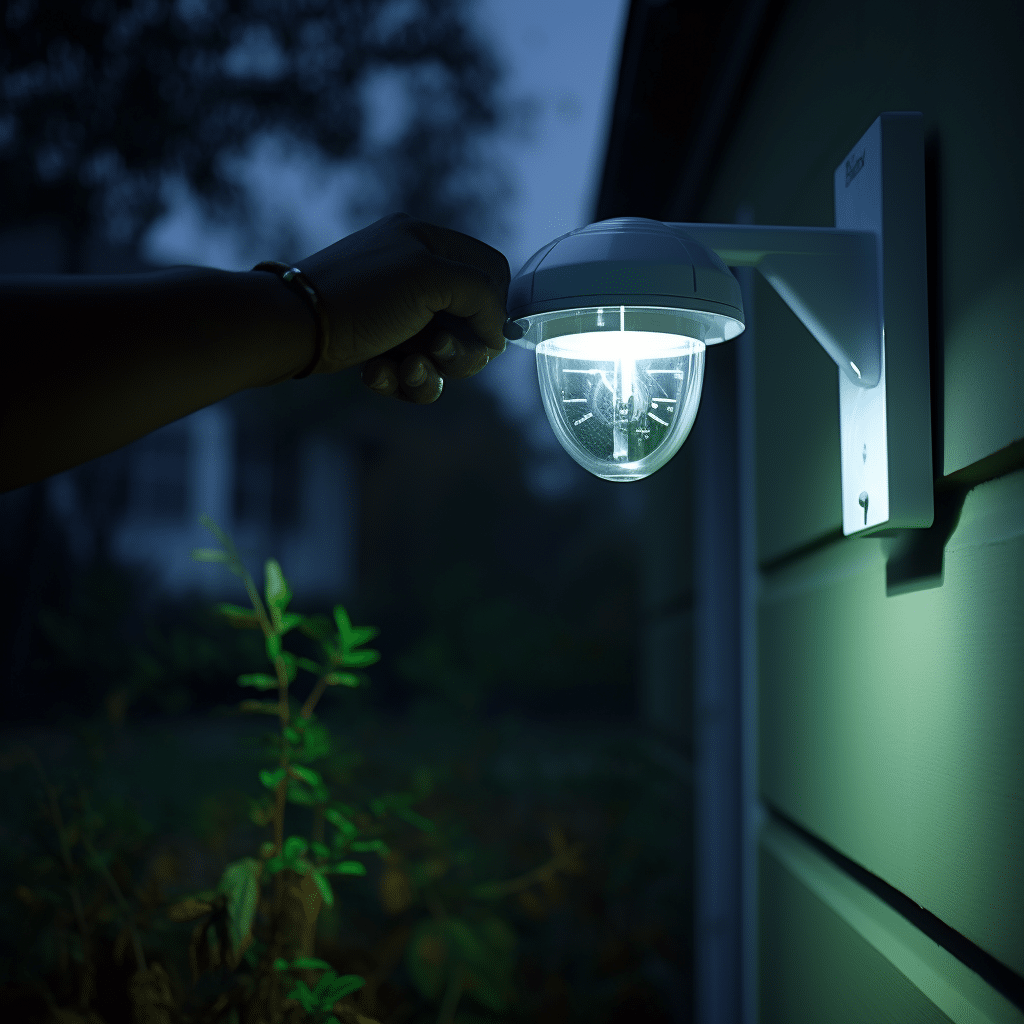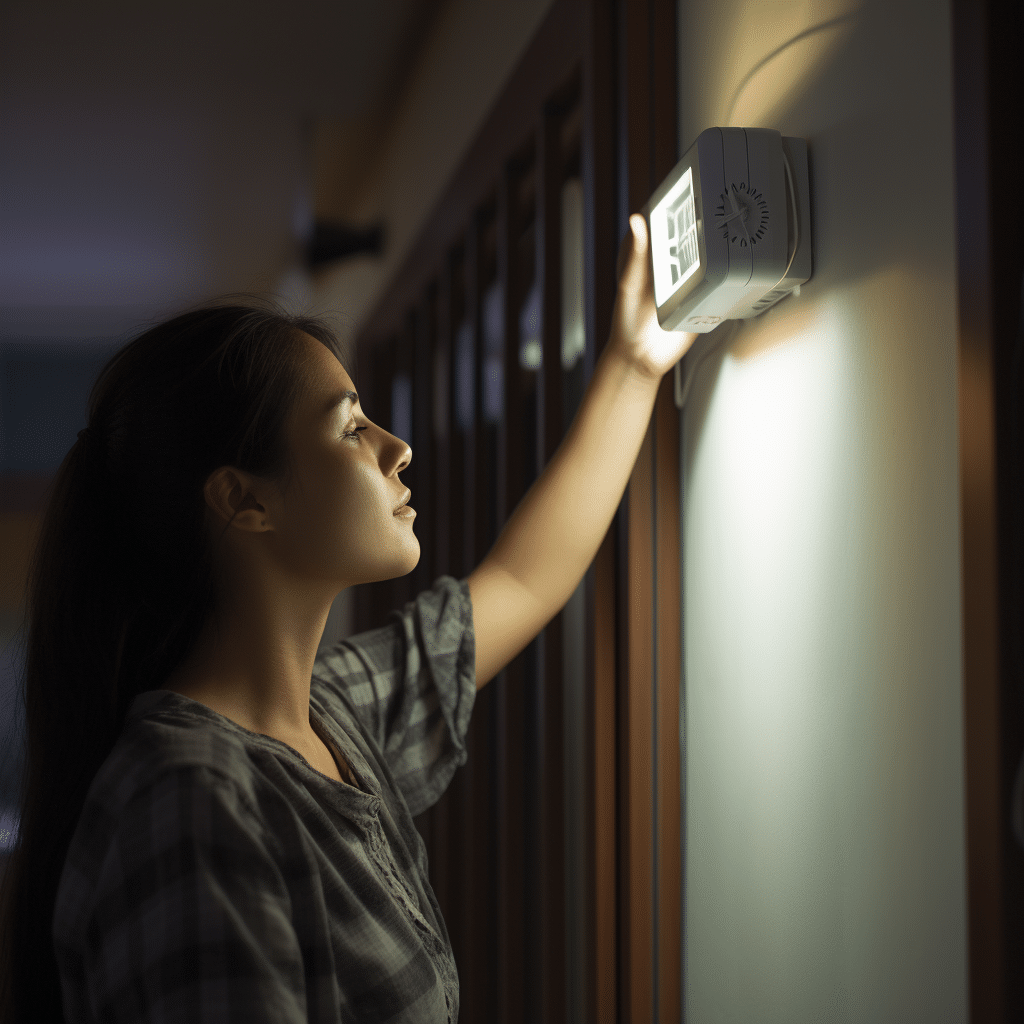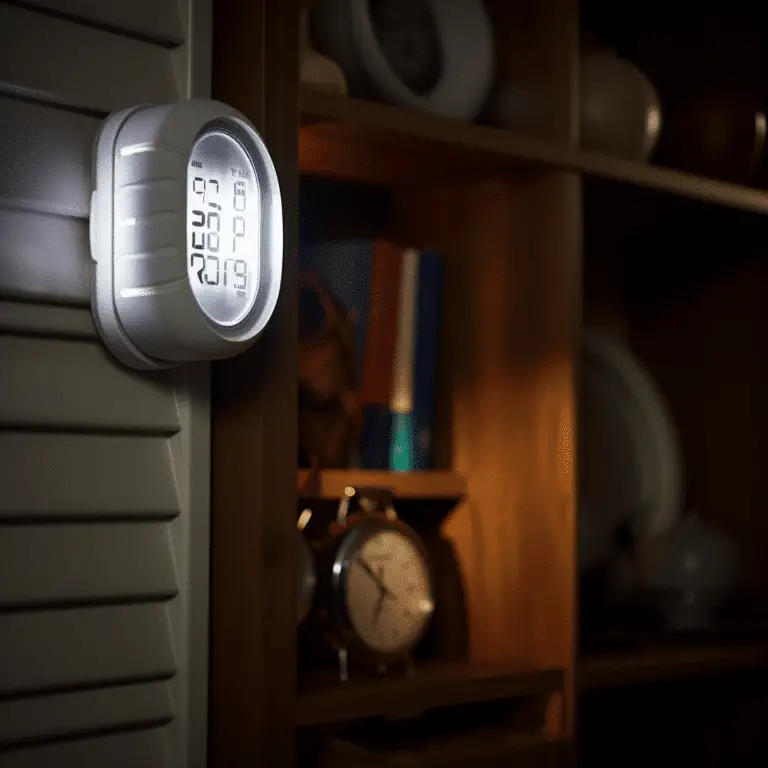Introduction
How To Adjust Time On Motion Sensor Lights: Motion sensor lights are a convenient and energy-efficient way to illuminate outdoor spaces. These lights are designed to turn on automatically when they detect motion, providing added security and visibility. However, over time, you may find that the timing of your motion sensor lights needs to be adjusted. Whether you want the lights to stay on for a longer duration or turn off sooner, making adjustments to the timing can help optimize their performance.
Adjusting the time on motion sensor lights is a relatively simple process that can be done by following a few steps. First, it is important to locate the motion sensor itself. This is typically a small, rectangular device that is mounted on the light fixture or nearby wall. Once you have located the sensor, you will need to access the settings panel, which is usually located on the bottom or back of the sensor.
To adjust the time on your motion sensor light, go to the settings panel and find the time adjustment options. These options may be called “time delay” or “timer.” Depending on your light’s model, you can adjust the time in seconds, minutes, or hours. Not all lights have adjustable timing options, so check the instructions or product specifications. To adjust timing, consider your needs and preferences. Increase the time setting for longer light duration and decrease it for shorter duration. It may take some trial and error to find the optimal timing, so be ready to make changes.
How do I adjust my motion sensor light to stay on longer?
Adjusting the motion sensor light to stay on longer can be a useful feature for various reasons. Whether you want to increase the security of your property or simply have a well-lit outdoor space, being able to control the duration of your motion sensor light is important. Fortunately, adjusting the settings of your motion sensor light is a relatively simple process that can be done by following a few steps.
To adjust your motion sensor light, find the small rectangular sensor attached to the light fixture. Remove the cover or use a screwdriver to access the settings panel. Find the timer adjustment setting to determine how long the light stays on after it’s triggered. Check the user manual if you need help. Adjust the duration of the light by turning a dial, switch, or pressing buttons. Experiment with different settings to find the best duration for your needs.
What are the 3 settings on a motion sensor light?
A motion sensor light is a type of lighting fixture that is designed to automatically turn on when it detects motion in its vicinity. These lights are commonly used for security purposes, as they can help deter potential intruders by illuminating the area when someone approaches. Motion sensor lights typically have several settings that allow users to customize their operation. The three most common settings found on a motion sensor light are:
1. Sensitivity: The sensitivity setting determines how sensitive the motion sensor is to detecting motion. This setting can be adjusted to ensure that the light only turns on when there is significant movement in the area, rather than being triggered by small animals or other minor disturbances. Higher sensitivity settings may be more suitable for outdoor areas where there is a higher likelihood of larger movements, while lower sensitivity settings may be more appropriate for indoor areas or areas with minimal activity.
2. Time Delay: The time delay setting determines how long the light will stay on after motion is detected. This setting can be adjusted to ensure that the light remains on for a sufficient amount of time to provide adequate illumination, without unnecessarily wasting energy. Shorter time delays may be more suitable for areas with frequent activity, while longer time delays may be more appropriate for areas with less activity.
3. Range: The range setting determines the distance at which the motion sensor can detect motion. This setting can be adjusted to ensure that the light only turns on when someone is within a certain distance of the sensor. This can help prevent false triggers and conserve energy. The range setting may vary depending on the specific model of motion sensor light, but it is typically adjustable to accommodate different needs and preferences.

Why does my motion light stay on all night?
There can be several reasons why your motion light stays on all night. One possible reason is that the motion sensor is being triggered by something, such as a tree branch or an animal, causing the light to stay on. Another reason could be a faulty sensor or wiring issue, which is causing the light to malfunction. Additionally, the sensitivity settings on the motion sensor may be set too high, causing it to detect even the slightest movement and keep the light on.
Motion lights can stay on all night if the sensor is faulty or damaged. Wiring problems can also cause continuous lighting. High sensitivity settings can keep the light on even with slight movement. To fix the issue, replace the sensor or repair/replace the wiring. In busy areas or near wildlife, motion lights may stay on all night. Lowering sensitivity settings can help. Identifying the cause of the problem can resolve it and ensure proper light operation.
Why does my motion sensor light turn off so fast?
There can be several reasons why your motion sensor light turns off so fast. Understanding these reasons can help you troubleshoot the issue and find a solution.
Motion sensor lights may stop working properly for different reasons. One possible cause is that the sensitivity of the sensor is not adjusted correctly. If set too sensitive, the light may turn off too soon, while if set too insensitive, it may not detect movement at all. Adjusting the sensitivity can solve the issue.
Another reason could be a power problem. The lights need electricity to work, and if there are loose or broken wires, the light may turn off too soon. Checking the power source and ensuring everything is connected correctly can help.
Environmental factors can also affect motion sensor lights. Objects in the range of the sensor can trigger false alarms, causing the light to turn off quickly. Harsh weather like rain or snow can also interfere with the sensor. To prevent this, remove any obstructions and protect the sensor from bad weather.
Lastly, a malfunctioning sensor could be the culprit. Over time, motion sensors can wear out or become damaged, causing erratic behavior.
Replace the sensor. Get a new one. Use a different one. Change it.
Can you make a motion sensor light stay on all the time?
Yes, it is possible to make a motion sensor light stay on all the time. Motion sensor lights are designed to detect movement and automatically turn on when someone enters the sensor’s range. However, there are certain circumstances where you may want the light to stay on continuously, such as during a party or when you need extra lighting in a specific area.
To keep a motion sensor light on, turn off the sensor switch, but it uses more energy. Adjusting the sensor sensitivity may also work, but it could trigger unnecessarily. A manual override switch gives more control. Before changing the sensor, consider your needs and drawbacks. Adjusting the time settings is easy. Find the rectangular sensor box and press the “time” or “timer” buttons. Adjust the duration using buttons, switches, or a dial/knob. Test the sensor by walking in front of it.
Can you provide a detailed guide on how to change the time settings on motion sensor lights?
Adjusting the time settings on motion sensor lights is a relatively simple process that can be done by following a few steps. Here is a detailed guide on how to change the time settings on motion sensor lights:
Step 1: Locate the motion sensor light switch. This is usually found near the light fixture or on the wall nearby. It may be labeled as “”Time”” or “”Timer.””
Step 2: Turn the switch to the “”Time”” or “”Timer”” position. This will activate the time adjustment mode.
Step 3: Use the buttons or dials on the motion sensor light switch to adjust the time settings. The specific method may vary depending on the model of the motion sensor light, so refer to the manufacturer’s instructions if needed.
Step 4: Once you have set the desired time, wait for a few seconds or press a confirmation button to save the changes.
Step 5: Test the motion sensor light to ensure that the time settings have been adjusted correctly. Walk in front of the sensor and observe if the light turns on and off according to the new time settings.
By following these steps, you can easily change the time settings on motion sensor lights and customize them according to your preferences and needs.
Are there any specific tools or equipment required to adjust the time on motion sensor lights?
When it comes to adjusting the time settings on motion sensor lights, you typically don’t need any specific tools or equipment. The process can usually be done using the controls or buttons on the motion sensor itself. However, it’s always a good idea to have a ladder or step stool on hand, especially if your motion sensor is mounted in a high location.
Understand how your motion sensor works before adjusting the time settings. Check the manufacturer’s instructions for guidance. Once you know the controls, you can adjust the time settings. This involves entering time adjustment mode, using arrow buttons to set the time, and confirming the new setting. Refer to the instructions for accurate guidance.
Are there any common troubleshooting tips for adjusting the time on motion sensor lights?
When it comes to adjusting the time settings on motion sensor lights, there are a few common troubleshooting tips that can help ensure a smooth process. First and foremost, it is important to check the power source. Make sure that the lights are receiving a steady power supply and that there are no loose connections or faulty wiring. If the lights are not receiving power, they will not be able to function properly and the time settings cannot be adjusted.
To fix motion sensor issues, check sensitivity settings. Lights might not be turning on or off at the right times because sensitivity is too high or low. Adjusting sensitivity will make sure lights respond to the right amount of motion and keep accurate time.
Can you explain the potential benefits of properly adjusting the time settings on motion sensor lights?
Properly adjusting the time settings on motion sensor lights can offer several benefits for both homeowners and businesses. Firstly, it can enhance security by ensuring that the lights are activated at the right time. By setting the time correctly, you can ensure that the lights turn on when it gets dark outside, deterring potential intruders and providing a sense of safety. This can be particularly useful for outdoor areas such as driveways, gardens, and entrances.
Adjusting the time settings can save energy and lower electricity bills. Motion sensor lights should only turn on when needed to prevent unnecessary energy use. This helps the environment and reduces costs. Properly adjusting the time settings can also increase the lifespan of the lights. Using them only when necessary means less wear and tear, fewer replacements, and lower maintenance costs for homeowners and businesses.

Conclusion
Adjusting motion sensor light time is simple and efficient. It can save energy and prevent interruptions. This feature is helpful for security and convenience. Follow the manufacturer’s instructions to customize the light duration. Know that different brands and models may have different procedures, and some devices may have time limitations. Understand your device’s capabilities.
Another key factor to consider when adjust motion sensor lights is the specific needs and preferences of the user. For example, in areas where there is frequent activity or foot traffic, it may be beneficial to set a shorter duration for the lights to stay on after motion is detected. On the other hand, in areas where there is less activity or where additional time may be needed to complete tasks, a longer duration may be more appropriate. By taking into account the specific requirements of the space and the desired level of lighting, users can customize the time settings to best suit their needs.
Motion sensor lights have a useful feature: their time settings can be customized. By following the instructions and considering the space’s needs, users can optimize the lighting and save energy. Adjusting the time on these lights can make them more effective for security or convenience purposes.

